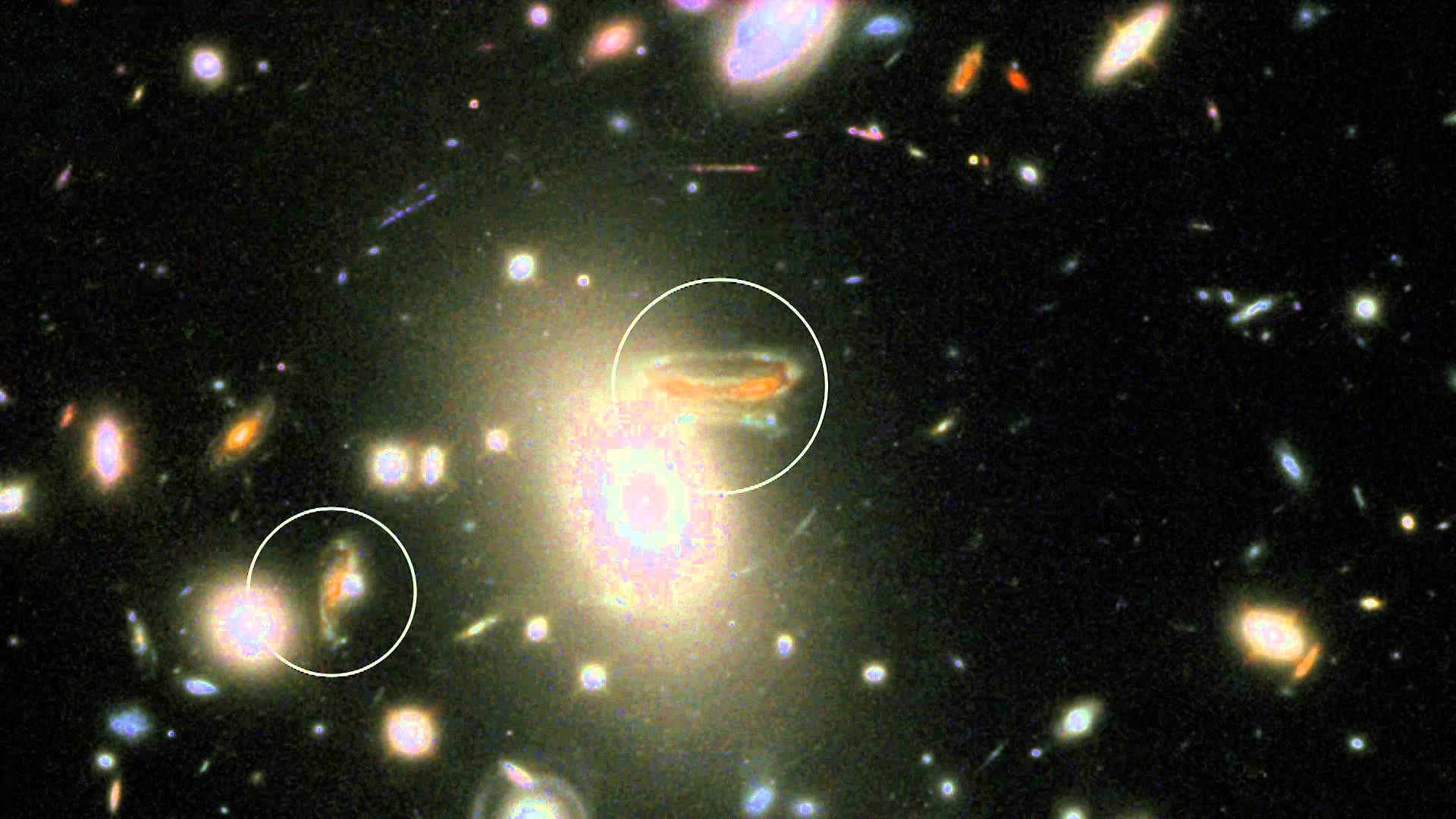This video is adapted from an intriguing episode of Hubblecast. nature’s telescopes. It explores a phenomenon called gravitational lensing. The gravitational force of a galaxy, full of stars, gas, dark matter, and dust, is so enormous that it affects the region it sits in and distorts the very fabric of the surrounding space.
It isn’t only galaxies that do this. Any object that has mass distorts the space around it with its gravity, from large galaxy clusters down to individual stars. In space, light travels invariably along straight lines. But what is a straight line? Well, it is the shortest distance between two points. But in a curved space, the shortest distance between two points may not look particularly straight to us.
Now what that means is that when light passes very near by a massive object that curves the space around it, the light ray is bent. As a result, this massive object, or rather the curved space around it produced by its gravity, acts like a lens; a gravitational lens that deflects light into our telescopes that would have otherwise never made it there.
This deflection means that distant and faint objects can suddenly be seen peeking from around the edge of a nearer “lens” — although they may look quite different than expected.
We see distant galaxies that have been “lensed” as arcs on the sky around their lenses. For example, the arc around this galaxy cluster is not a photographic error, but a second more distant galaxy — deformed, but visible.

